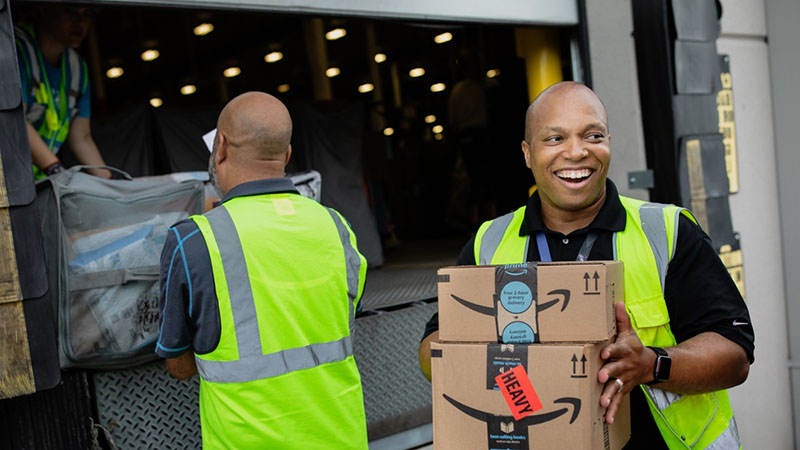Amazon Raises Pay For US Warehouse Workers, Drivers

The wage packets for Amazon warehouse workers and transportation drivers will get a welcome increase, in the United States at least
Amazon is to expand the pay and benefits for its front-line staff, after committing to a nearly $1 billion investment over the next year.
Amazon announced the move on Wednesday, saying the pay increases for front-line employees will begin in October.
It means that the average starting pay is now more than $19 per hour in the United States (from $18 per hour), along with a new benefit that provides instant, free access to a salary at any time during the month.

Wage increase
The increase in average starting pay for front-line staff in customer fulfillment and transportation roles, translates to staff earning between $16 and $26 per hour depending on their position and location in the US.
Amazon’s minimum wage for hourly employees in the US remains $15 per hour.
Amazon also announced additional investments in career development programs, building on its commitment to provide free college tuition to hourly employees.
This brings the company’s total investment in benefits offered to its team to nearly $10 billion this year.
“Front-line employees across customer fulfillment and transportation will now earn, on average, more than $19 per hour in the US, and they also have access to a growing range of comprehensive benefits to support themselves and their families,” said John Felton, Amazon’s senior VP of Worldwide Operations.
“Continuing to invest in pay, providing easy access to earned wages at any time during the month, and offering great benefits and career advancement opportunities are all part of our long-term efforts to be the best employer in the world,” said Felton.
Amazon also said that its expanded its pay access program, Anytime Pay, which allows all US staff to obtain up to 70 percent of their eligible earned pay – whenever they choose and without fees – is designed to put employees in control of their pay schedule.
Previously, most Amazon employees received their regular pay once or twice monthly. Anytime Pay now offers employees access to their earned pay as often as they like.
Labour crisis?
Amazon’s move to increase the wages of its US workforce comes as it battles soaring inflation, coupled with high staff turnover.
Indeed, so serious is the staff turnover issue, that a leaked internal memo in July suggested that Amazon could deplete the US labour supply by 2024.
The research suggested Amazon could run out of people to hire in its US warehouses by 2024, placing its service quality, growth plans, as well as its e-commerce dominance, at risk.
At the time it was reported that Amazon could delay for a few years this looming labour crisis by raising wages and increasing warehouse automation.
But Amazon staff reportedly predicted that only a series of sweeping changes to how the company does business and manages its employees will significantly alter the timeline.
The memo warned that Amazon’s labor crisis was especially pressing in a few locations, with internal models showing that the company was expected to exhaust its entire available labour pool in the Phoenix, Arizona, metro area by the end of 2021, and in the Inland Empire region of California, roughly 60 miles east of Los Angeles, by the end of 2022.
Union move?
Companies with high levels of staff turnover (i.e. churn) often find it difficult to fulfil positions, as once people leave a firm due to whatever frustrations, they tend not to return to that workplace. This usually only leaves school leavers as potential hires for these companies.
Before the pandemic, Amazon was losing about 3 percent of its workforce weekly, or 150 percent annually.
By contrast the annual average turnover in transportation, warehousing and utilities was 49 percent in 2021 and in retail it was 64.6 percent, less than half of Amazon’s turnover.
In the United States, Amazon in the second largest employer in America (behind Walmart), and has hired huge numbers of staff – both during and after the Covid pandemic.
But now Amazon is reportedly struggling to fill all its needed positions, and is contending with a US unemployment rate close to a 50-year low.
And Amazon is facing a number of unionisation efforts at its fulfilment centres and warehouses, with a Staten Island warehouse becoming the first US Amazon facility to vote for a trade union earlier this year.